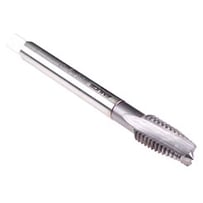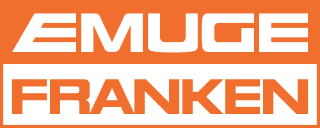Drilling has long been recognized as one of the most common yet most challenging of all metalworking operations. Tapping is even tougher. Aside from problems with chip evacuation and potential coolant starvation, there's the sheer amount of metal being removed relative to the available space for the cutting tool.
Consider a half-inch deep 1/4"-20 thread. Do the math and you’ll find that each revolution of the tap produces chips that—if laid flat—would measure 0.785" in length. Now multiply that by ten rotations and you’re left with chips nearly 8" in length. That’s a lot of material to remove in an operation that takes just seconds to complete.
Then there are feeds and speeds to consider. Let’s go back to the 1/4"-20 example for a moment, or for that matter, any 20-pitch thread. Unlike the drill used to make the hole, the tap in this instance must be fed at precisely 0.05" per revolution. What’s more, it needs to rotate at a cutting speed that’s appropriate for the material.
Here again, that's a whole bunch of metal to remove in a very short amount of time. Couple that with the need to get that metal up and out of the hole; if not, the tap is bound to break. The problem becomes even more pronounced as hole sizes decrease. That’s because taps smaller than the 1/4"-20 just mentioned have even less room for chips and are therefore notorious for breakage, usually at the worst possible time. The solution starts with the right tap, as in one with the optimal geometry, coating, and flute angle for the hole shape, the material, and its hardness level.
For shops that machine only low-carbon steels or large quantities of aluminum, buying a material-specific tap or two is no big deal. But for those that machine everything from Inconel and titanium to tool steel and stainless, the argument is often one of bloated tool crib inventories, not to mention the time needed to investigate which tap will be most effective for the material being machined, and then learning how to apply it.
often one of bloated tool crib inventories, not to mention the time needed to investigate which tap will be most effective for the material being machined, and then learning how to apply it.
It’s perfectly understandable that shops prefer to keep their cutting tool inventories low. After all, who wants to purchase a specific tap for each alloy on the shop floor, or maybe even a specific tap for each of those material’s different hardness levels? Still, material-specific tooling often makes excellent sense, particularly when you’re cutting difficult alloys. In Part II of Taming Tapping, we’ll explore some of the things to look for when searching for a robust tapping solution.

